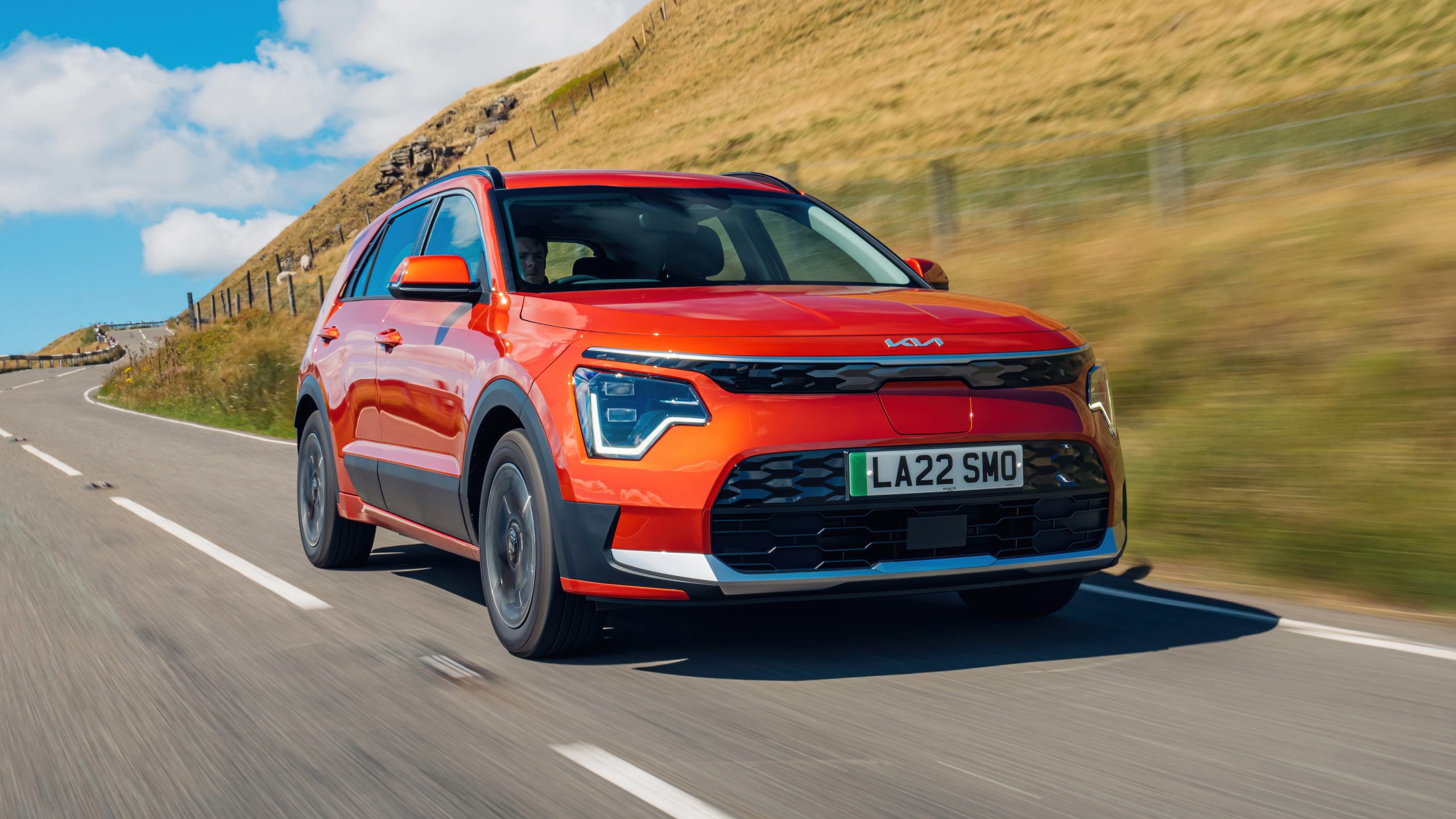Electric vehicles have rapidly become more common, offering smoother drives, lower maintenance costs, and freedom from gas station visits. But one of the biggest concerns among buyers remains battery longevity. After all, the battery is the heart of any electric car.
Much like any rechargeable battery, EV batteries degrade over time, leading to range loss. This doesn’t mean that after five years the car becomes useless, but rather that owners may see a reduction in how far they can drive on a full charge.
This factor is especially important for secondhand buyers and those looking to keep their vehicles long-term. While all EVs will experience some range loss over the years, some models have proven more consistent and reliable than others.
Manufacturers have made massive improvements in battery chemistry, thermal management, and software to slow down degradation. Some automakers like Tesla use active cooling systems and software-based charging limits to preserve long-term health.
Others, such as Nissan, started off with more basic battery protection but have learned over time and upgraded their designs. These differences can greatly impact how much range remains after several years of daily use.
Even within the same brand, results can vary by model, climate, and usage patterns. Still, there are several vehicles on the market that have demonstrated a strong ability to retain most of their original range after five years of real-world driving.
The models listed here are based on common industry data, user reports, and general understanding of battery performance across known platforms. Some vehicles perform exceptionally in cold or hot climates, while others excel in normal temperate regions.
The cars included are not necessarily the most luxurious or powerful, but they do show remarkable battery consistency with typical use over time. Owners of these models have often reported minimal range loss and high confidence in their vehicle’s long-term performance. That’s an important factor in resale value and everyday usability.
Each of the following ten EVs stands out for its reliable range retention over the years. While newer models may have even better battery management systems, these specific ones have already proven themselves. Let’s take a closer look at each model and what makes them strong contenders for drivers looking to avoid excessive range loss after five years of ownership.

1. Tesla Model 3
The Tesla Model 3 has quickly become one of the most popular EVs around the world. It offers impressive performance, a sleek design, and strong software integration. But perhaps more importantly, the battery tech inside the Model 3 has proven reliable over time.
Tesla uses a combination of advanced battery cooling, charging algorithms, and software features that preserve battery health. Many long-term owners of the Model 3 report losing only about 5 to 10 percent of their range after five years, depending on climate and usage patterns.
Tesla’s battery packs use cylindrical cells, which are thermally managed through liquid cooling. This system prevents overheating and helps maintain optimal battery temperatures during charging and driving. Unlike air-cooled batteries found in older EVs, Tesla’s setup avoids thermal stress that can accelerate degradation.
This makes a big difference when driving in hot or cold conditions. In fact, Model 3s driven in mild climates often experience even lower degradation than average. Tesla also sends over-the-air updates that can improve efficiency or adjust battery management, which adds to its long-term consistency.
Another factor is Tesla’s Supercharging network. While frequent fast charging can cause battery stress in some EVs, Tesla designs its batteries to handle high-speed charging more gracefully. The system includes smart limitations to avoid overcharging or overheating during Supercharger use.
Some long-distance drivers have clocked over 100,000 miles with less than 10 percent range loss, which speaks volumes about the underlying battery quality. Owners also appreciate that the displayed range remains accurate and consistent over time.
The Model 3 also benefits from an active community of users and detailed tracking platforms that help paint a clear picture of real-world performance. Unlike some EVs that only offer anecdotal feedback, the Model 3 has been tracked extensively through user-generated data.
This provides a high level of confidence for those who want a reliable vehicle with minimal surprises down the road. The consistent battery performance is one of many reasons the Model 3 remains a top choice.
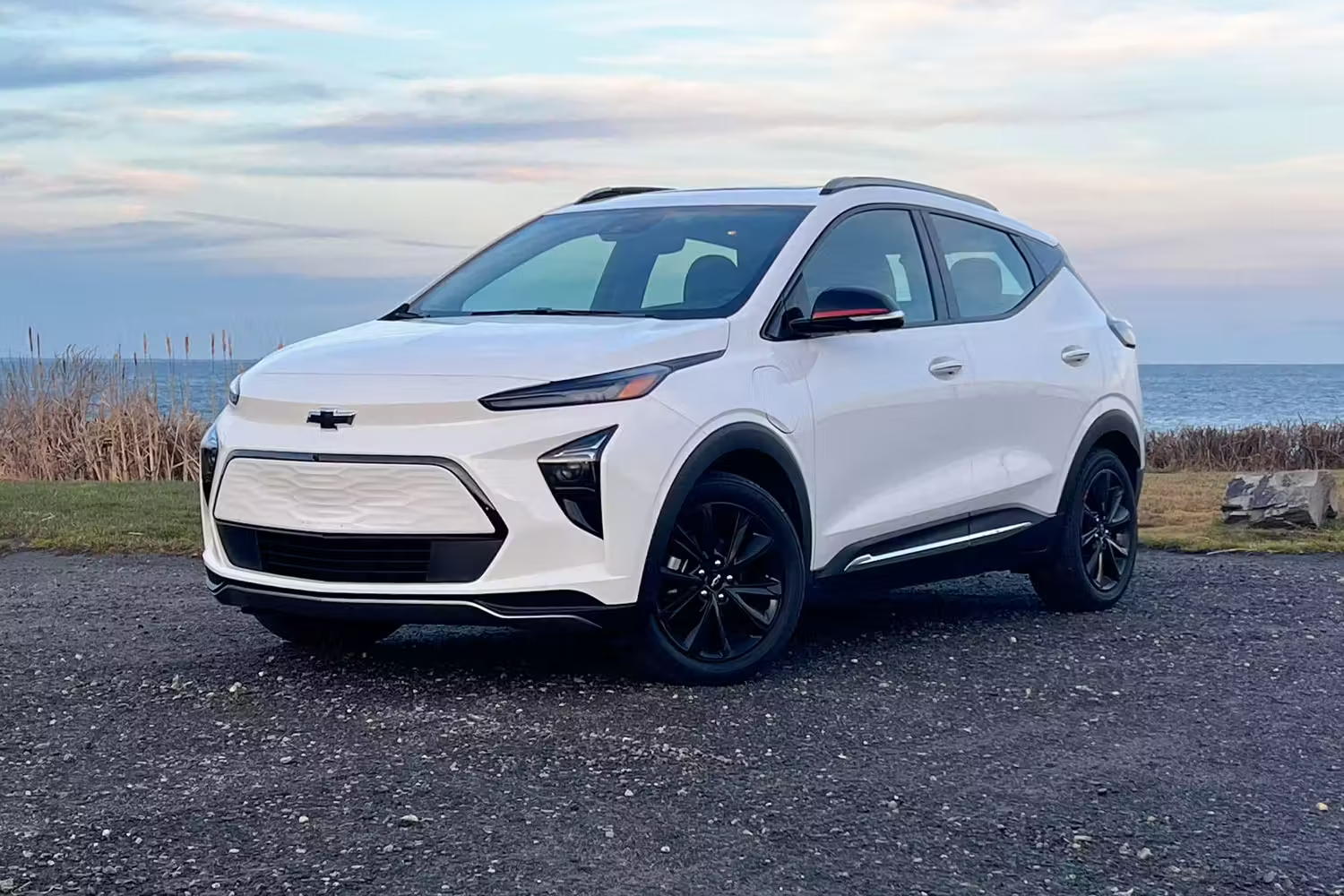
2. Chevrolet Bolt EV
The Chevrolet Bolt EV entered the market as a practical, affordable compact EV with a solid range for its price. While it doesn’t carry the high-tech flair of some competitors, it has quietly built a strong reputation for retaining range well over time.
Most owners of five-year-old Bolt EVs report battery degradation in the 5 to 8 percent range. That means a car that started with 238 miles might still offer over 215 miles, which is impressive considering its budget-friendly positioning.
One reason the Bolt does well in range retention is due to its robust battery pack. General Motors used LG Chem cells with a stable thermal profile and an effective cooling system.
The Bolt’s battery thermal management uses liquid cooling, which helps stabilize temperature during both charging and driving. This reduces the kind of heat-related stress that can eat away at capacity over time. Although not as sophisticated as Tesla’s system, it’s more than adequate for most driving conditions.
The Bolt’s software also plays a role in keeping the battery in good shape. It limits charging to avoid unnecessary high-voltage stress and gradually ramps up charging speeds rather than applying full power immediately. These measures may slightly slow charging time, but they help prolong battery life.
Even drivers who use DC fast charging occasionally don’t seem to suffer drastic range loss, which speaks well to the Bolt’s engineering. It also helps that most Bolt drivers use them for city commuting, where slower, Level 2 charging is more common.
Over the years, the Bolt has had a few recalls and updates, especially related to battery fire risks. However, newer versions and retrofitted vehicles come with upgraded battery modules. These updated packs have been showing even better degradation results in newer units. For anyone looking for a used EV that still delivers a dependable range after several years, the Bolt remains a strong candidate.

3. Hyundai Kona Electric
The Hyundai Kona Electric is often praised for its balance of range, design, and comfort. But one of its underappreciated strengths is battery longevity. Owners of early Kona Electric models from 2019 and 2020 frequently report very little range degradation even after tens of thousands of miles.
Most see losses of less than 8 percent after five years, and in some cases, even less than 5 percent. That’s impressive considering the car’s mid-tier price and broad availability.
Hyundai equipped the Kona Electric with a 64 kWh battery pack using pouch cells, combined with a competent thermal management system. The battery is liquid-cooled, which is essential for long-term performance in both cold and hot climates.
Hyundai’s software also includes features such as battery preconditioning and controlled charging to minimize wear. The result is a well-rounded battery system that can handle both urban commuting and longer road trips without excessive degradation.
Another reason the Kona performs well is its default driving behavior. Unlike some performance-focused EVs, the Kona encourages more conservative driving with smooth acceleration and gentle regen.
This reduces stress on the battery pack over time. Hyundai also includes a useful set of driver tools for monitoring battery health and optimizing charging behavior. These features help owners build good habits that translate into better long-term range performance.
One final point in the Kona’s favor is its general efficiency. Even with some degradation, the Kona remains one of the most efficient EVs on the road. This means that even a slightly lower total capacity doesn’t result in a drastic range drop.
Owners continue to report consistent daily performance that meets or exceeds their original expectations, which is a strong endorsement for long-term value. Whether used in the city or for moderate highway drives, the Kona Electric holds its range well.
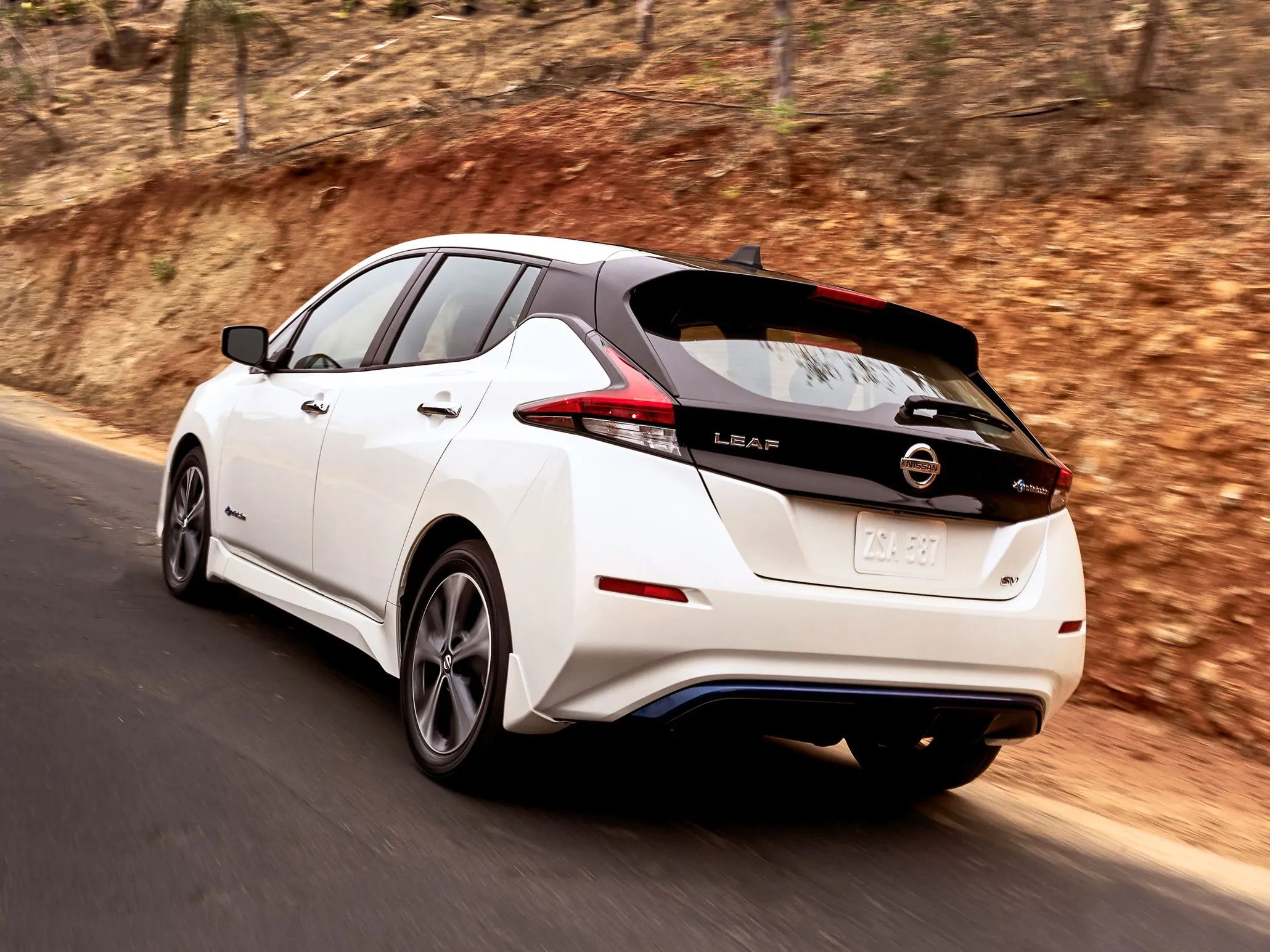
4. Nissan Leaf (with 40 kWh or 62 kWh battery)
The Nissan Leaf has been around longer than most modern EVs, and its reputation for range retention has been mixed depending on the model and year. Early Leafs without battery cooling suffered significant range loss.
However, newer versions with the 40 kWh and 62 kWh batteries have shown much better results. With careful use, many owners report losing only around 10 to 12 percent of capacity after five years. While not as low as some rivals, this is still manageable, especially given the car’s widespread availability and low cost.
The Leaf’s current batteries use improved chemistry and have benefited from better management algorithms. Still, one of the main drawbacks is that Nissan continues to rely on passive air cooling.
This system is less effective at controlling temperature during fast charging or hot weather. As a result, degradation can vary more widely depending on how and where the car is used. Drivers in cooler regions often report much better results than those in hotter climates.
Despite this limitation, many Leaf owners get good long-term performance by following basic care guidelines. Avoiding frequent DC fast charging, keeping the battery between 20 and 80 percent for daily driving, and parking in the shade can all help slow degradation.
Nissan has also added software features that limit peak battery temperature and restrict aggressive charging when necessary. These measures are not foolproof but do offer improved protection compared to earlier models.
For buyers who understand the importance of usage patterns, the newer Leafs offer decent range retention at a competitive price. The 62 kWh version especially offers over 220 miles of range and has enough buffer to tolerate a bit of degradation without affecting usability.
It may not match Tesla or Hyundai in long-term consistency, but it provides a practical option for drivers who need an affordable EV with generally acceptable battery life.
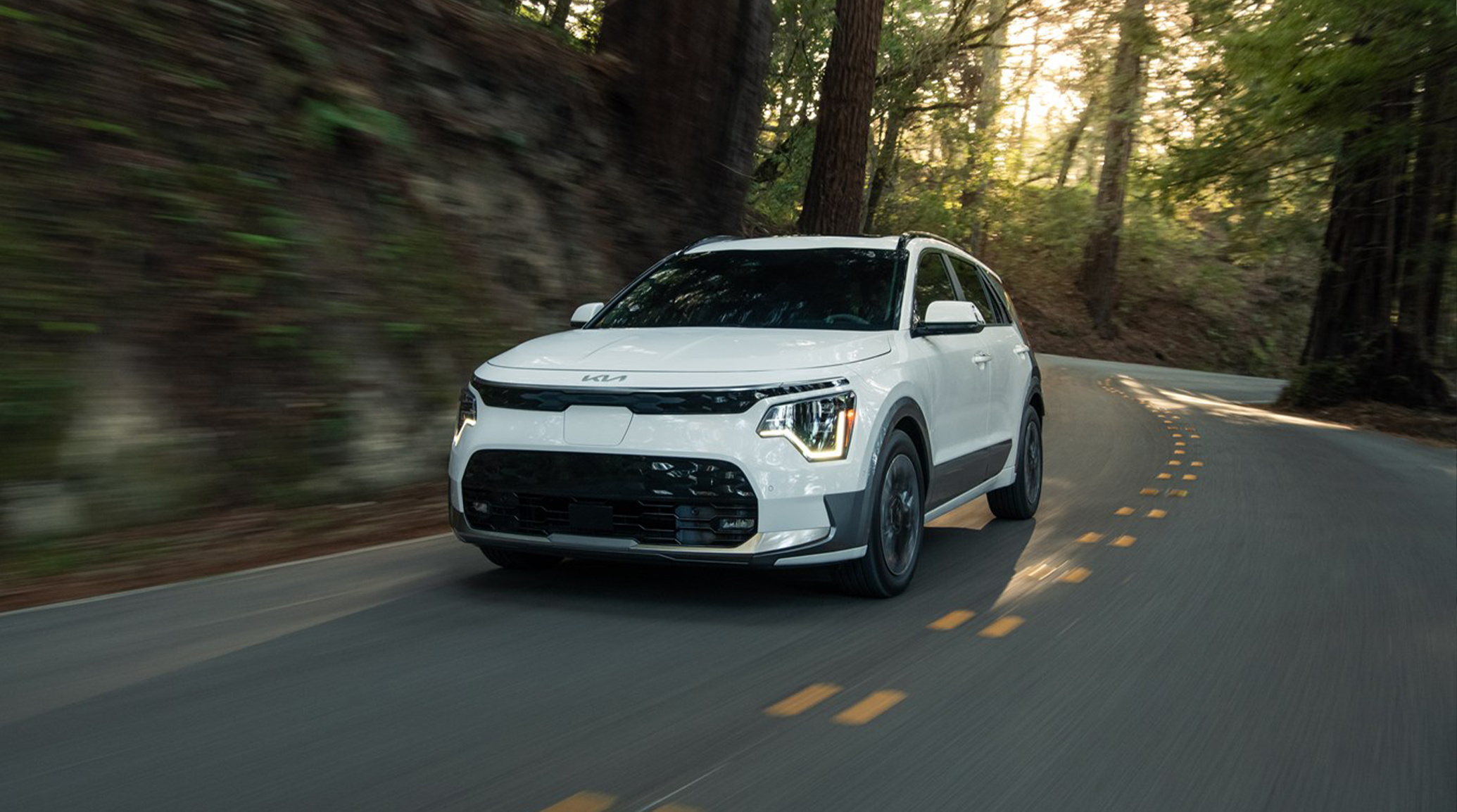
5. Kia Niro EV
The Kia Niro EV shares a similar platform and battery technology with the Hyundai Kona Electric, and as expected, its performance in long-term range retention is quite solid. Owners of earlier models, dating back to 2019, often report 5 to 7 percent battery degradation after five years of regular use.
This places the Niro EV among the more reliable vehicles when it comes to maintaining usable range over time. For a compact SUV-style EV, that kind of consistency provides peace of mind for those who commute daily or take occasional road trips.
The Niro EV features a 64 kWh battery pack that benefits from liquid cooling and well-managed thermal protection. Kia’s engineers built the battery system with long-term performance in mind. The vehicle actively regulates battery temperature during both charging and driving.
This helps avoid temperature swings that could accelerate degradation. In real-world conditions, this system works well across various climates, from very cold to extremely hot environments. Battery preconditioning also helps optimize the charging experience, especially in winter.
Beyond thermal management, the Niro EV includes conservative battery software that avoids pushing the battery to extremes. Kia limits both charging and discharging rates in a way that prioritizes battery health without making the car feel sluggish.
Drivers still enjoy brisk acceleration and reasonable charging speeds, but not at the expense of long-term range. This balance contributes to the Niro’s ability to maintain most of its original capacity even after five years of everyday driving.
Another key aspect is the vehicle’s general efficiency. The Niro EV delivers strong miles per kWh, which means that even with some battery loss, real-world range remains competitive.
It continues to appeal to buyers looking for an EV that can handle both city life and occasional highway use without demanding too many sacrifices. For anyone interested in a long-lasting electric SUV that doesn’t break the bank, the Niro EV offers dependable value with steady battery performance.

6. Tesla Model S (2016 and newer)
The Tesla Model S has long been known for its premium performance and long range. What’s less commonly discussed is how well it maintains that range over time.
While older versions of the Model S from before 2015 showed more variable results, models from 2016 onward, especially those with the 90D, 100D, or Long Range battery packs, have proven surprisingly resilient. Many owners report range loss of only 5 to 8 percent even after 100,000 miles or more, particularly in temperate regions.
Tesla’s approach to battery protection plays a big role here. The Model S uses advanced thermal management with liquid cooling and a multi-layer battery pack design that ensures even distribution of heat and load. Software is also tightly integrated with the hardware to optimize battery health.
Tesla limits the top and bottom ends of the battery’s usable capacity without telling the user, which helps slow degradation behind the scenes. The result is that drivers can use the vehicle freely without worrying too much about battery life.
Long-distance driving is common with the Model S due to its high range and access to Tesla’s Supercharger network. While fast charging can be stressful for some EVs, the Model S handles it well due to its cell design and cooling system.
Even when used heavily for road trips, degradation remains modest. Some high-mileage users have reported performance declines of just 7 or 8 percent after years of fast-charging routines, which is better than many competitors.
Another strength of the Model S is software support. Tesla continues to update even older vehicles with new firmware that can improve efficiency or adjust charging behaviors.
This ongoing support keeps the car competitive with newer models and helps preserve the experience over time. For buyers in the used EV market, a well-maintained Model S offers both luxury and reliability, with solid long-term range retention that reflects its premium engineering.
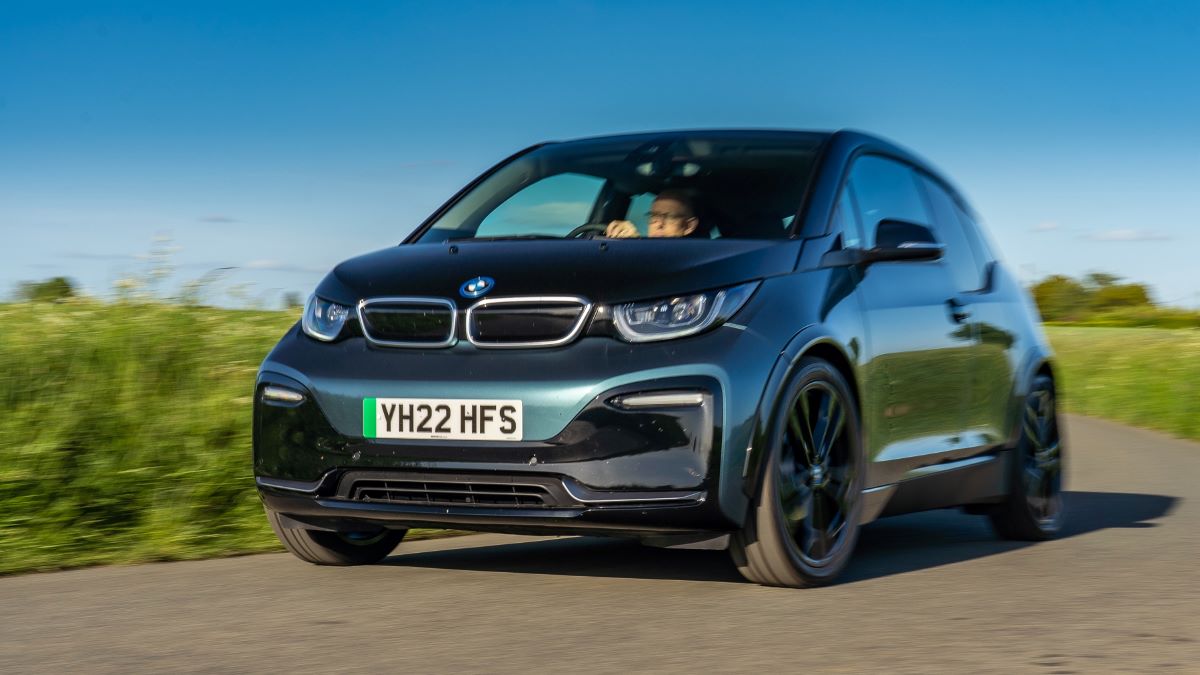
7. BMW i3 (with 33 kWh and 42 kWh batteries)
The BMW i3 was one of the earliest premium electric vehicles to gain widespread attention. Though its design is polarizing, the i3 has gained a loyal following for its efficiency, build quality, and longevity. One area where the i3 continues to shine is in how well it maintains range after several years.
Owners of the 33 kWh and 42 kWh versions often report only minor degradation after five years, usually in the range of 5 to 9 percent. That’s quite reasonable for a vehicle that’s been out for a decade in various versions.
BMW designed the i3 with a strong focus on sustainability, including the use of high-quality battery cells with solid-state protections. The battery pack uses liquid cooling to regulate temperature, and the onboard systems carefully control charging and discharging limits.
These protections were ahead of their time when the car was released and have helped preserve the battery’s health long after many expected it to fade. The structure of the pack also allows for modular repairs, which can help keep older units viable longer.
One unique factor with the i3 is that many drivers use it as a city commuter, with short daily trips and regular Level 2 charging. This usage profile is ideal for battery preservation.
The car rarely undergoes the thermal stress of long-distance road trips or rapid charging, which helps it avoid some of the conditions that accelerate range loss in other models. For those who do use DC fast charging occasionally, the i3 still handles it reasonably well without significant capacity loss.
Though the range on paper is modest compared to newer EVs, the i3’s lightweight design and strong efficiency mean that even with some battery aging, it remains very usable.
The 42 kWh version can deliver 150 miles or more even after several years, and the i3’s high resale values reflect its lasting appeal. For those who don’t need to drive long distances daily, the i3 is a standout choice for reliability and range retention.
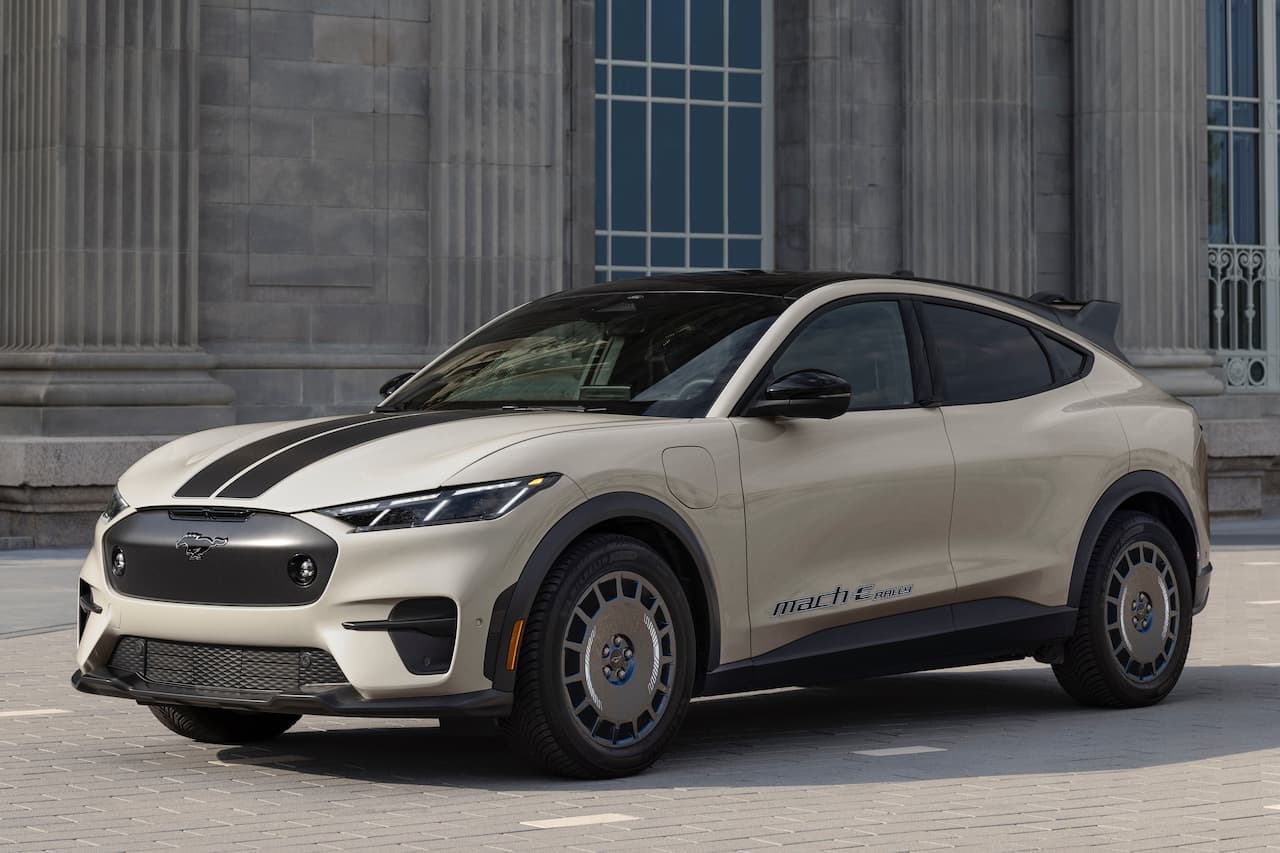
8. Ford Mustang Mach-E
The Ford Mustang Mach-E entered the EV market with bold styling, strong performance, and a clear mission to challenge the Tesla Model Y. But beyond its looks and features, it has also demonstrated promising battery reliability.
Early production vehicles from 2020 and 2021 are now hitting the five-year mark, and owner reports show range degradation between 6 and 10 percent on average. This performance is especially encouraging given the vehicle’s size and power output.
Ford uses lithium-ion battery packs sourced from LG Chem, with thermal management handled through liquid cooling. The system is designed to operate in a wide temperature range and includes safeguards against high-voltage stress.
While not as aggressively optimized as Tesla’s packs, the Mach-E’s battery system is still robust and relatively conservative in how it charges and discharges. These controls make a real difference when it comes to long-term range.
Another factor that helps the Mach-E maintain range is its efficient drivetrain and driving modes. The vehicle allows users to select from several profiles that adjust power delivery, regenerative braking, and energy usage.
Drivers who use Eco mode regularly see less battery stress, which translates to slower degradation. Even those who drive more aggressively don’t seem to report extreme battery loss, which is a testament to the system’s resilience.
Software updates and remote diagnostics also play a role in the Mach-E’s longevity. Ford has shown a strong commitment to improving vehicle performance over time through updates. Battery conditioning, charging management, and even route planning can be improved with new firmware.
These features help owners adapt to aging batteries and squeeze out the most range possible even years down the road. As more data comes in, the Mach-E appears to be a reliable option for drivers who want performance without sacrificing long-term battery health.
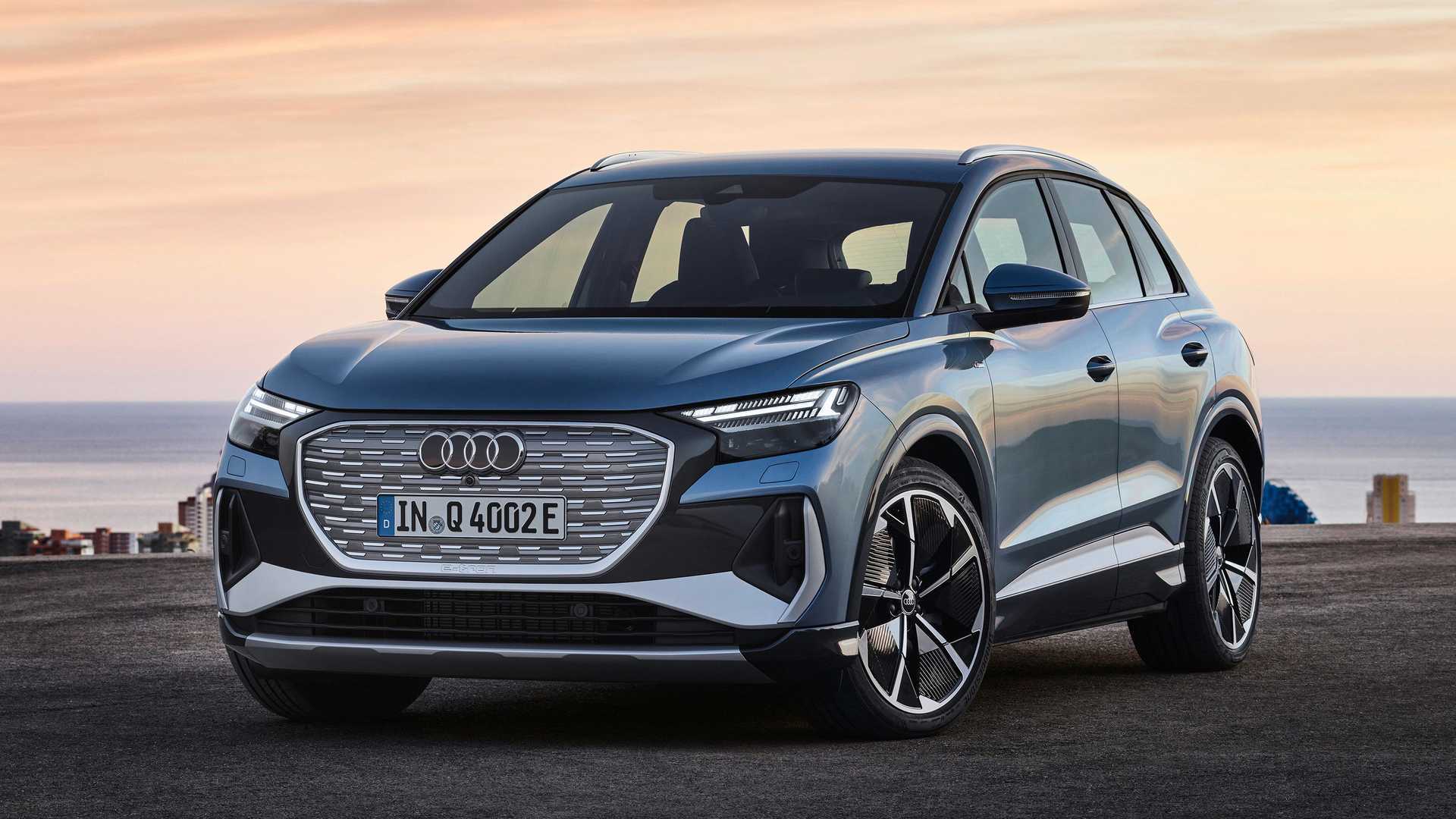
9. Audi e-tron
The Audi e-tron offers a premium EV experience, complete with quiet comfort, advanced tech, and confident handling. While it’s not the most efficient electric SUV, its battery durability is impressive. Early models from 2019 and 2020 have shown range degradation between 6 and 9 percent after five years.
For a vehicle with a relatively large 95 kWh pack and higher weight, that’s a solid result. Audi focused heavily on battery quality and thermal stability from the start, and the results are visible in real-world usage.
The e-tron features an advanced thermal management system that keeps the battery within a narrow temperature band regardless of outside conditions. The pack is liquid-cooled and includes independent temperature sensors and heating elements to prevent cold-related stress.
This allows the e-tron to fast-charge consistently without exposing the battery to harmful thermal extremes. For a luxury SUV, this kind of engineering ensures comfort and reliability go hand-in-hand.
Audi also programmed the battery software to protect against deep discharges and overcharging. Only a portion of the battery’s full capacity is made available for everyday use, which helps slow degradation.
Even if the range appears slightly lower than some competitors on paper, the tradeoff is that the battery stays healthier longer. This conservative approach makes the e-tron a strong choice for those who plan to keep their vehicle for many years.
Though it’s heavier and less efficient than some rivals, the e-tron offsets this with fast charging, strong build quality, and predictable battery behavior. Owners report consistent performance over time, with very few surprises related to range loss or charging issues. For those willing to invest in a premium electric SUV, the e-tron is a reliable performer when it comes to long-term range stability.
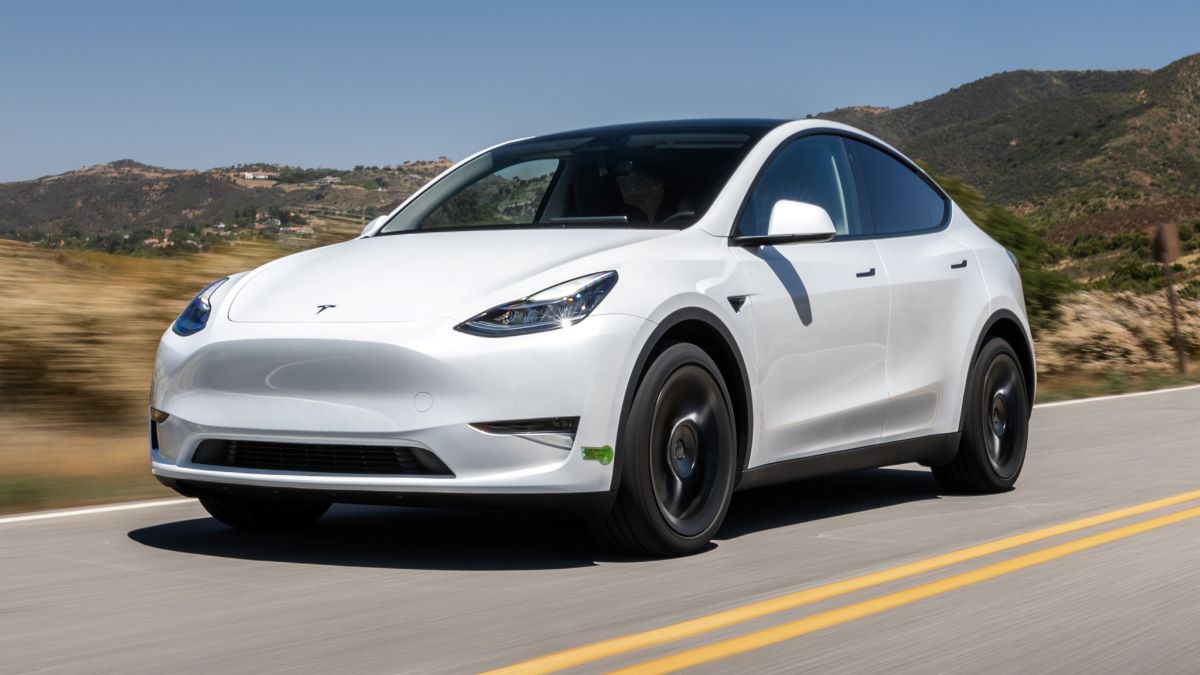
10. Tesla Model Y
The Tesla Model Y rounds out this list as another vehicle that performs exceptionally well in terms of range retention. Based on the same platform as the Model 3, the Model Y shares much of the same battery technology, thermal management, and software logic.
That means it also benefits from minimal degradation. Reports from early adopters show average range loss between 4 and 8 percent after five years, which places it among the most reliable EVs for battery performance.
The Model Y’s large battery pack is actively cooled and managed with precise software limits. Tesla’s BMS (Battery Management System) ensures that the battery is never exposed to extreme temperatures for long.
Smart charging features also limit wear and tear during Supercharger sessions. Many drivers use the Model Y for long family trips or high-mileage commutes, and the battery has held up well under those demands.
One of the unique advantages the Model Y has is its access to Tesla’s efficiency-focused software tools. These include trip planning with real-time range estimates, optimized navigation for charging stops, and dynamic routing based on traffic.
These tools help drivers avoid unnecessary battery drain, which contributes to the vehicle’s long-term performance. Even with some degradation, the Model Y’s excellent efficiency ensures that usable range remains competitive with newer models.
The Model Y has earned a reputation for reliability and resilience. Owners praise not only its practicality but also how well it holds up after years of regular use.
Whether driven in cities or on highways, the Model Y consistently maintains most of its original capacity, giving drivers confidence in both daily use and resale value. For families and professionals who rely on a consistent range, the Model Y is one of the top options available today.
Also Read: 5 Obscure EVs That Hold Value vs 5 Famous EVs That Depreciate Fast
The question of how well an electric vehicle retains its battery range over time is crucial for anyone considering buying an EV whether new or used. Batteries are the cornerstone of electric mobility, and understanding their longevity can mean the difference between a satisfying long-term investment and unexpected frustrations.
After examining ten electric vehicles known for maintaining their range after five years, it becomes clear that battery technology, thermal management, and software optimization play vital roles in preserving capacity and ensuring consistent performance.
Each vehicle on this list demonstrates that with careful design and engineering, battery degradation can be minimized to the point where it has little impact on daily usability. Brands like Tesla have led the charge by integrating advanced cooling systems and intelligent battery management software, allowing models such as the Model 3 and Model Y to lose only a small fraction of their range over many years and miles.
The ability to regularly update the vehicle’s software further extends battery life, fine-tuning charging and discharging behaviors to adapt to real-world conditions.
Other automakers, including Hyundai and Kia, have also made impressive strides with their liquid-cooled battery packs and thoughtful charging protocols. The Hyundai Kona Electric and Kia Niro EV serve as excellent examples of mid-priced EVs that maintain solid range performance without sacrificing affordability.
Meanwhile, legacy models like the Nissan Leaf, despite earlier shortcomings in battery cooling, have improved considerably in recent iterations, making them viable options for those prioritizing cost-effectiveness and battery care habits.
Luxury and performance vehicles, such as the Tesla Model S, Audi e-tron, and BMW i3, show that battery longevity is not just about entry-level EVs. These cars combine premium materials, efficient thermal management, and conservative software limits to ensure that range remains reliable even after years of intensive use.
For the Ford Mustang Mach-E, an emerging player in the electric SUV market, initial owner reports are promising, suggesting that it can compete well with established rivals in both range retention and driving experience.
A common theme across all these vehicles is the importance of a robust thermal management system. Batteries that remain within an optimal temperature range during charging and driving suffer less stress and consequently degrade at a slower pace.
Vehicles equipped with liquid cooling systems generally outperform those relying on passive air cooling, especially in extreme climates where heat or cold can accelerate battery wear. Furthermore, smart software controls that limit charging speed, regulate power output, and protect against deep discharges add layers of defense against premature degradation.
From a user perspective, adopting good charging habits also supports long-term battery health. Avoiding frequent use of high-power fast chargers, not keeping the battery at 100 percent charge for extended periods, and parking in shaded or temperature-controlled environments can all help extend usable range.
Many modern EVs come with built-in features to assist with these practices, including scheduled charging and battery preconditioning.
Looking at the bigger picture, the ability of these EVs to maintain range after five years contributes positively to sustainability. Longer-lasting batteries mean fewer replacements and less environmental impact from battery production and disposal. It also supports the resale market by preserving vehicle value, making EV ownership more accessible to a wider audience over time.
As battery technology continues to evolve, future electric vehicles are likely to perform even better in terms of longevity and efficiency. Solid-state batteries, improvements in cell chemistry, and more sophisticated thermal systems promise to push the boundaries of what is currently achievable. However, the ten EVs covered in this article already set a high standard and provide practical examples of what owners can expect today.
In conclusion, those seeking an electric vehicle with dependable range after five years have a growing number of reliable options. Whether prioritizing affordability, luxury, or performance, it is possible to find an EV that combines advanced battery technology with thoughtful design to minimize degradation.
Understanding the factors that influence battery health and choosing a model with proven track records can lead to a satisfying ownership experience and peace of mind for years to come.

